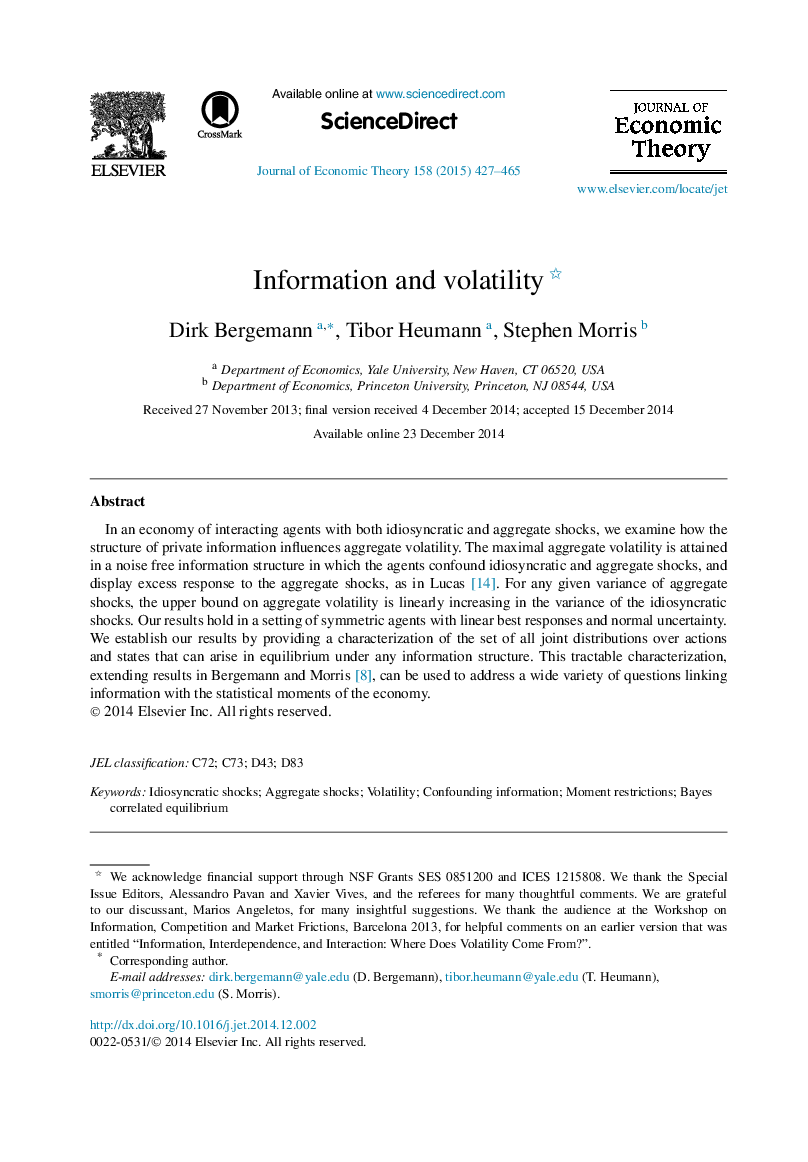| Article ID | Journal | Published Year | Pages | File Type |
|---|---|---|---|---|
| 956605 | Journal of Economic Theory | 2015 | 39 Pages |
In an economy of interacting agents with both idiosyncratic and aggregate shocks, we examine how the structure of private information influences aggregate volatility. The maximal aggregate volatility is attained in a noise free information structure in which the agents confound idiosyncratic and aggregate shocks, and display excess response to the aggregate shocks, as in Lucas [14]. For any given variance of aggregate shocks, the upper bound on aggregate volatility is linearly increasing in the variance of the idiosyncratic shocks. Our results hold in a setting of symmetric agents with linear best responses and normal uncertainty. We establish our results by providing a characterization of the set of all joint distributions over actions and states that can arise in equilibrium under any information structure. This tractable characterization, extending results in Bergemann and Morris [8], can be used to address a wide variety of questions linking information with the statistical moments of the economy.
